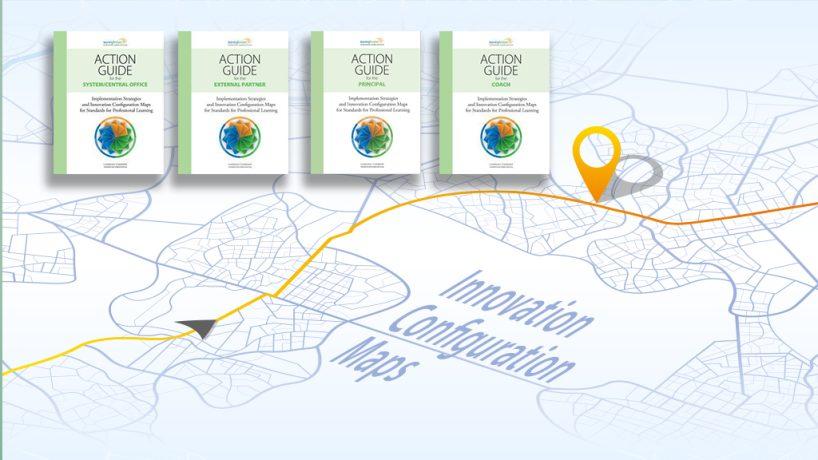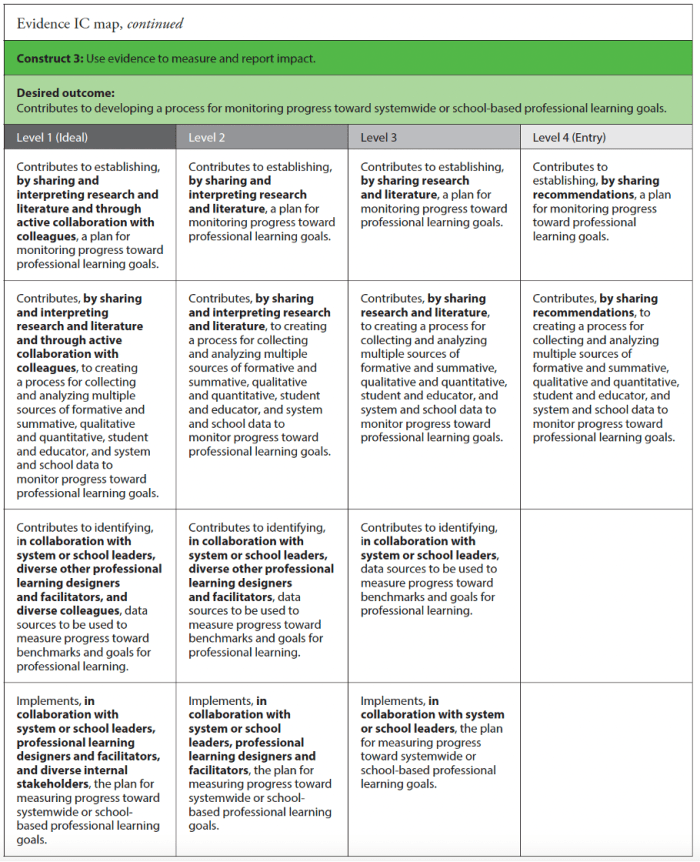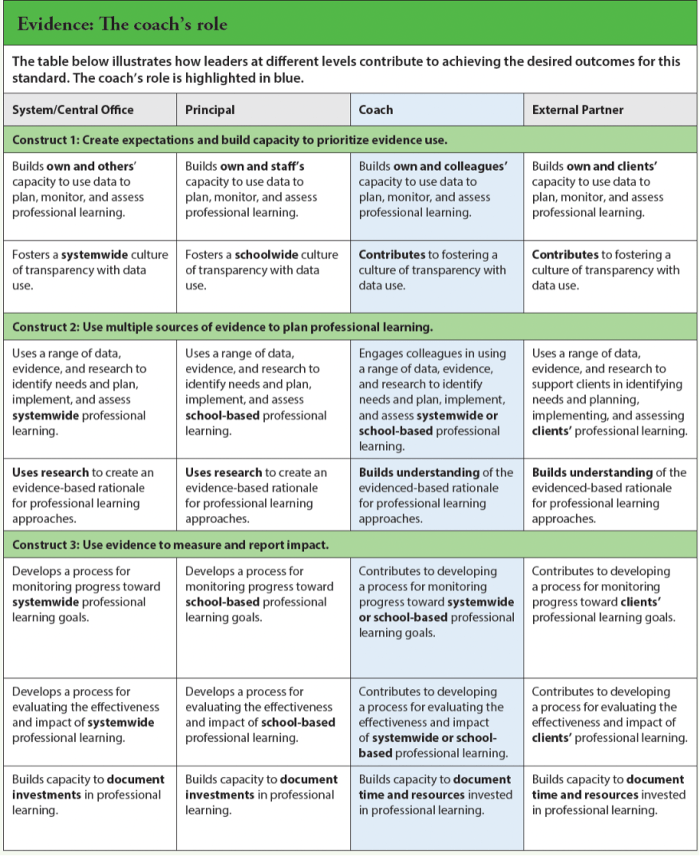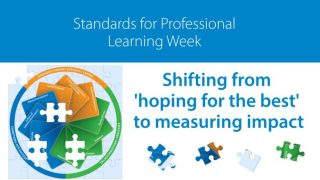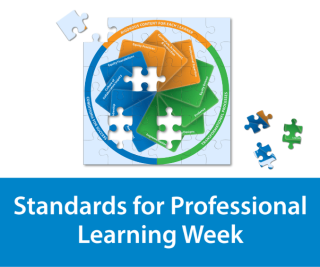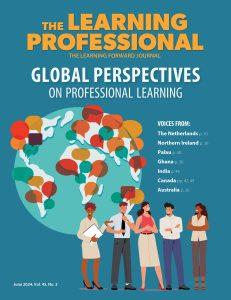One of the best ways to learn a language is to immerse yourself in it in multiple ways – listen, observe, study, practice. That approach to learning a new language also happens to be an effective way to learn and become proficient with Standards for Professional Learning. Reading the 11 standards is a great start, and an important touchpoint, but it will get you only so far. So, what do you do next? How do you practice what you know and get more fluent?
Innovation Configuration (IC) maps are a useful tool for improving your fluency, for moving from the first steps of standards implementation to comprehensive application. The IC Maps for the Standards for Professional Learning show what it looks like for stakeholders to implement each standard within their specific roles and responsibilities and at various stages of implementation. Users can see how actions at each stage build on the ones that come before it, take stock of their current actions, and plan for getting to the next stage. This brings detail and specificity to the concepts presented in the standards, and deepens the ability to not only speak the language, but use it.
To help educators in a variety of roles with that process, Learning Forward created action guides with implementation strategies and IC maps, one each for principals, coaches, district and central office leaders, and external partners. (The roles refer to job functions, not necessarily job titles. For example, a school system may invite an assistant principal or an experienced classroom teacher to fulfill the responsibilities described in the IC map for coaches.)
Using the action guides is a logical and straightforward process that works like this:
- Select one of the 11 standards. They are organized into three sections that correspond with the three frames of Standards for Professional Learning: Rigorous Content for Each Learner, Transformational Processes, and Conditions for Success.
- Continue by choosing one of the three constructs for that standard. Each standard covers three key constructs, or concepts, in depth so you can break down the standard into further detail.
- Focus on a desired outcome, or observable impact, for that construct.
- Examine the behaviors, which comprise the outcomes, and represent the regular habits, skills, and practices you can undertake to meet the outcomes.
The IC maps present behaviors across four levels of descending impact from left to right. The column on the left represents ideal behaviors — those that most fully embody the intent of the standard. The column on the right represents initial behaviors — those you might take as first steps. By looking across the levels, you can determine where you are now and plan for how to get to deeper implementation.
Here’s an example of an IC map for the Evidence standard, taken from the Action Guide for the Coach.
One of the most important features of the action guides is that they are aligned across roles.
When a principal and an assistant superintendent use their respective guides, they’ll be working toward the same outcomes and taking coordinated steps to achieve them.
To highlight this alignment, each IC map is preceded by a table that shows a side-by-side comparison of system/central office leaders’, principals’, coaches’, and external partners’ responsibilities. Here’s an example, again from the Evidence standard in the coach’s guide. The coach’s role is highlighted in blue to show how the focus role fits into the larger landscape.
Learning Forward encourages teams of educators to use the action guides as a set. But the guides also stand alone and can be used individually or in role-specific teams. Interactive versions of the IC maps are also available online for Learning Forward members.
Learning a new language isn’t always easy, but it’s the best way to travel to the places you want to go. For educators, the destination is always better student outcomes, and high-quality, standards-aligned professional learning is a sure path to get there. The action guides with IC maps are your travel guides. Don’t leave home without them.
Resource:

